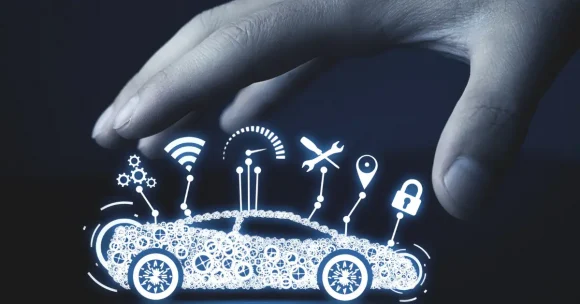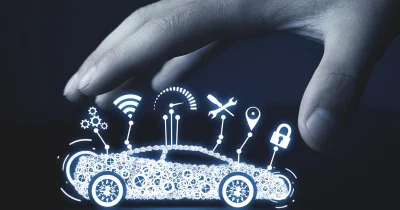The transportation sector is powered by smart technology. The impact of smart tech is undeniable – from giving vehicles the ability to think, learn, and communicate to making transit operations more efficient.
The rise of smart technologies also highlights the ways in which many companies could be falling behind the times.
Smart tech in transportation
As technological advancements redefine the sector, businesses must adapt to remain competitive.
At the heart of the transit transformation are:
- Artificial intelligence (AI).
- Machine learning (ML).
- The Internet of Things (IoT).
- Augmented reality (AR).
- Virtual reality (VR).
- Advanced driver-assistance systems (ADAS).
AI and ML: The brains behind the wheels
AI (and the subfield of ML) is, in short, a computer’s ability to mimic human thinking and behavior. This includes intelligent processes like problem-solving and decision-making. The use of AI and ML is becoming increasingly popular in transportation.
For example, autonomous driving company Waymo uses AI to train self-driving cars. The company released a short video clip of how an AV adjusts its route while navigating tunnels, storms, and even a construction obstacle.
The Waymo training model boils down to three basic steps: Sense, Solve, and Go.
- LiDAR (Light Detection And Ranging) and cameras assist the vehicle in ‘sensing’ obstacles.
- AI and ML ‘solve’ the problem.
- After that, the AV is ready to ‘go.’
Uber Freight uses generative AI (Gen AI) as a blueprint for an automated logistical future. CEO Lior Ron envisions a future where logistics experts “can define the constraints and define what they’re trying to solve, and the machine can take over everything else.”
ALSO READ: From EVs to AI: Takeaways and triumphs from SXSW 2024
IoT’s role in connecting the dots
IoT technology is a network of physical devices – including appliances and yes, even vehicles – embedded with sensors or software to exchange data with other devices over the internet. It is the driving force behind fleet management services.
By utilizing IoT, fleet managers can enable real-time monitoring of a vehicle’s location while keeping track of fuel usage, engine status, and driver behavior. All these factors can then be applied to optimizing routes and reducing operational costs.
Beyond transportation, IoT devices can track cargo location in supply chain operations to prevent spoilage of perishable goods.
Impact of AR and VR
While AR is popular in retail and e-commerce, its impact on transportation and driver-assisted tech should not be overlooked. The tech is used in driver trainer, to enable remote collaboration between experts and on-site technicians, and to enhance navigation.
Case study: Envisics, a UK-based company specializing in holographic technology, designed an AR HUD (head-up display) that projects safety alerts, navigation guidance, and other data inside the windscreen.
When the company raised $50 million in a Series C round, founder and CEO Dr. Jamieson Christmas said the tech “unlocks more of the holographic potential.” He explained: “We really are on the path to delivering that Star Wars vision of the world, with [in-car] 3D volumetric experiences.”
Advantages of ADAS
Advanced Driver-Assistance Systems (ADAS) have been around since the 1970s when the first anti-lock braking system was introduced to the market. It consists of a suite of technologies utilizing sensors, cameras, ML, and AI to enhance driver safety.
Some examples of ADAS capabilities include:
- Blind spot recognition.
- Adaptive cruise control.
- Lane departure warning.
- Automatic emergency braking.
In the trucking industry, for example, ADAS is used beyond avoiding collisions or revealing questionable driving behaviors. It’s also used to prevent rollovers – a common peril due to a truck’s size.
By constantly monitoring speed, steering input, and lateral acceleration, the ADAS system can adjust brake application and engine power, ensuring a truck remains upright.
MORE HERE: How technology reduces trucking accidents
About the author
Cheryl has contributed to various international publications, with a fervor for data and technology. She explores the intersection of emerging tech trends with logistics, focusing on how digital innovations are reshaping industries on a global scale. When she's not dissecting the latest developments in AI-driven innovation and digital solutions, Cheryl can be found gaming, kickboxing, or navigating the novel niches of consumer gadgetry.











